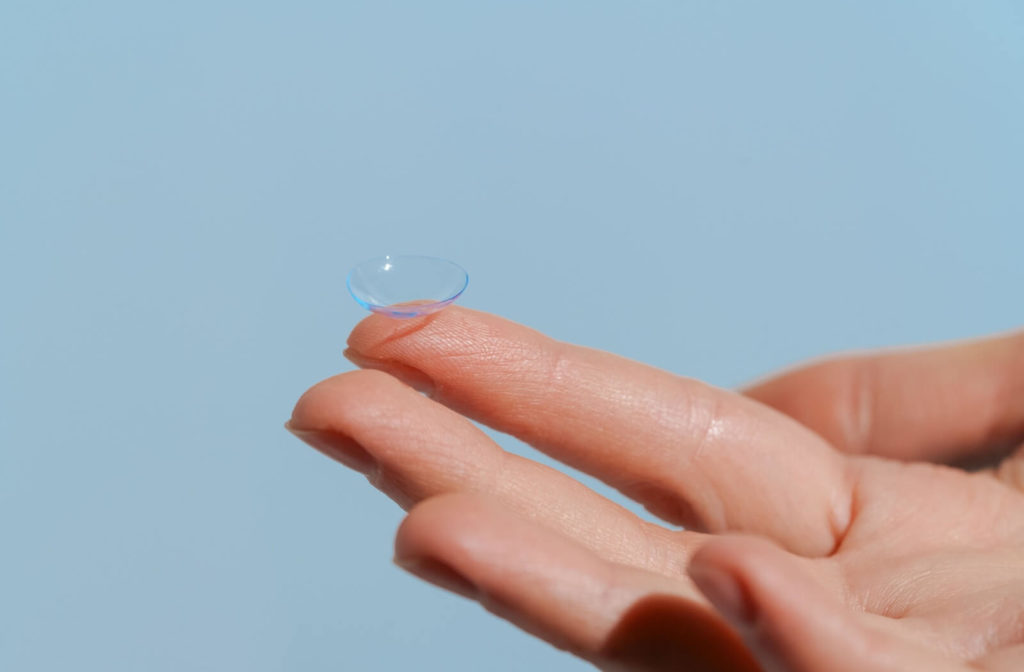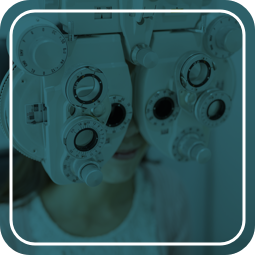Waking up with clear vision might seem like a dream, but ortho-k lenses make it a reality. Whether you’re looking for an answer for yourself or your child, these lenses offer an innovative way to address myopia for children and adults alike. But what are ortho-k lenses?
Unlike standard contacts worn throughout the day, ortho-k (or orthokeratology) lenses are worn at night. These put gentle pressure on the edge of your cornea and slowly adjust its shape. When removed in the morning, your vision will be clear throughout the day!
The Basics of Ortho-K
Ortho-K, short for orthokeratology, takes a unique approach to vision correction. These are specially designed contact lenses that aren’t worn during the day—instead, you wear them overnight. These gently reshape your cornea to change how it refracts light.
When you remove the lenses in the morning, the cornea retains its new shape. You’ll have clear vision throughout the rest of the day—despite any refractive error like myopia. Throughout the day, the cornea slowly returns to its natural shape, and your vision will return to normal.
This might sound complex at first, but it’s simpler than it sounds. Your eye needs to be a certain shape to properly refract light, but refractive errors affect the curve of the eye and lens. Ortho-k lenses aim to restore a proper shape to your eye and give you clear vision without needing to rely on other corrective lenses.
Ortho-k is a nonsurgical and effective treatment for both children and adults looking for an alternative to more traditional treatments.
The Benefits of Ortho-K Lenses
Ortho-k lenses offer numerous benefits over other types of vision correction. Ortho-k is a nonsurgical and effective treatment for both children and adults looking for an alternative to more traditional treatments.
Because the lenses are worn overnight, they remove the need for other corrective lenses. This freedom and convenience can’t be overstated. Your daily life becomes easier to manage, and you don’t need to worry about losing or damaging your glasses and contacts. However, there is a significant benefit for children—myopia control.
Ortho-K Lenses for Myopia Control
As children grow, their eyes are constantly changing. And when myopia, or (nearsightedness) is a factor, these changes become more of a problem. Myopia develops when the eye grows longer than it is wide, causing a host of symptoms:
- Blurry vision when trying to focus at a distance
- Headaches
- Eye strain
- Squinting
It also significantly increases the risk of future eye problems like retinal damage, glaucoma, and cataracts. However, if myopia is caught early, you can work with your optometrist in a program called myopia control. This treatment aims to slow how far the eye elongates to preserve more of your child’s future vision.
This is one area where ortho-k lenses shine. As they reshape the cornea, they help slow this elongation. When used alongside other methods like atropine eye drops, ortho-k lenses can be extremely effective. In fact, ortho-k lenses can effectively slow down myopia progression by up to 50%.
This lowers the risk of future complications and protects your child against conditions like retinal damage. This simple and safe option can make a big difference for children with myopia.
Are There Risks To Wearing Ortho-K
Looking at the evolution of Orthokeratology (Ortho-K) over the past 60 years, we’ve witnessed significant advancements in lens design, materials, and our understanding of potential complications. Early concerns about bacterial infections due to improper lens fit, poor hygiene, and subpar lens materials have been largely mitigated through improved education and more rigorous lens care protocols.
As a result, complications related to Ortho-K lenses have been reduced to levels comparable to those seen with other types of contact lenses. Therefore, we emphasize the importance of patient education on proper lens hygiene and handling. Such education empowers patients to manage the risks associated with Ortho-K lenses and seek prompt eye care if necessary. By adopting a proactive approach, potential complications can be addressed early, making Ortho-K a safer and more attractive treatment option today.
How to Get Ortho-K Lenses
Even though they’re extremely effective for children, ortho-k lenses can be helpful for adults as well. To get your lenses, all you need to do is schedule an eye exam with your optometrist.
During this appointment, your optometrist will:
- Assess your eye health
- Determine the level of your refractive error
- Take precise measurements of your cornea
- Use corneal topography to design your custom ortho-k lenses
- Provide instructions on how to properly wear and care for your lenses
These steps make sure that your future ortho-k lenses are tailored to your specific needs. You’ll likely receive a temporary pair so you can try out the treatment. It may take some time to get used to the sensation, but this goes away eventually.

Caring for Your Ortho-K Lenses
Proper care and maintenance are key with any contact lenses. Because you’re putting them directly into your eyes, you need to make sure they’re sterile and safe at all times. Make sure to:
- Always wash your hands before handling your lenses
- Clean your lenses daily with the recommended solution
- Replace the lens case regularly to prevent contamination
- Replace your lens as recommended by your optometrist to prevent complications associated with aging lenses
- Follow your optometrist’s guidelines for safe lens wear
These precautions make a big difference. They lower the risk of infections and scratches while keeping the lenses protected. With some simple hygiene, you can keep your lenses clean, your eyes healthy, and your vision clear!
Is Ortho-K Right for You?
Ortho-k is an excellent option. These overnight lenses offer a wonderful alternative to more traditional approaches to vision correction and can be ideal for children and adults alike. If you’re considering ortho-k, contact our team at Downtown Eye Care & The Contact Lens Department! We can help find a solution that works for you.
Your journey to clearer vision could start today—why wait?















